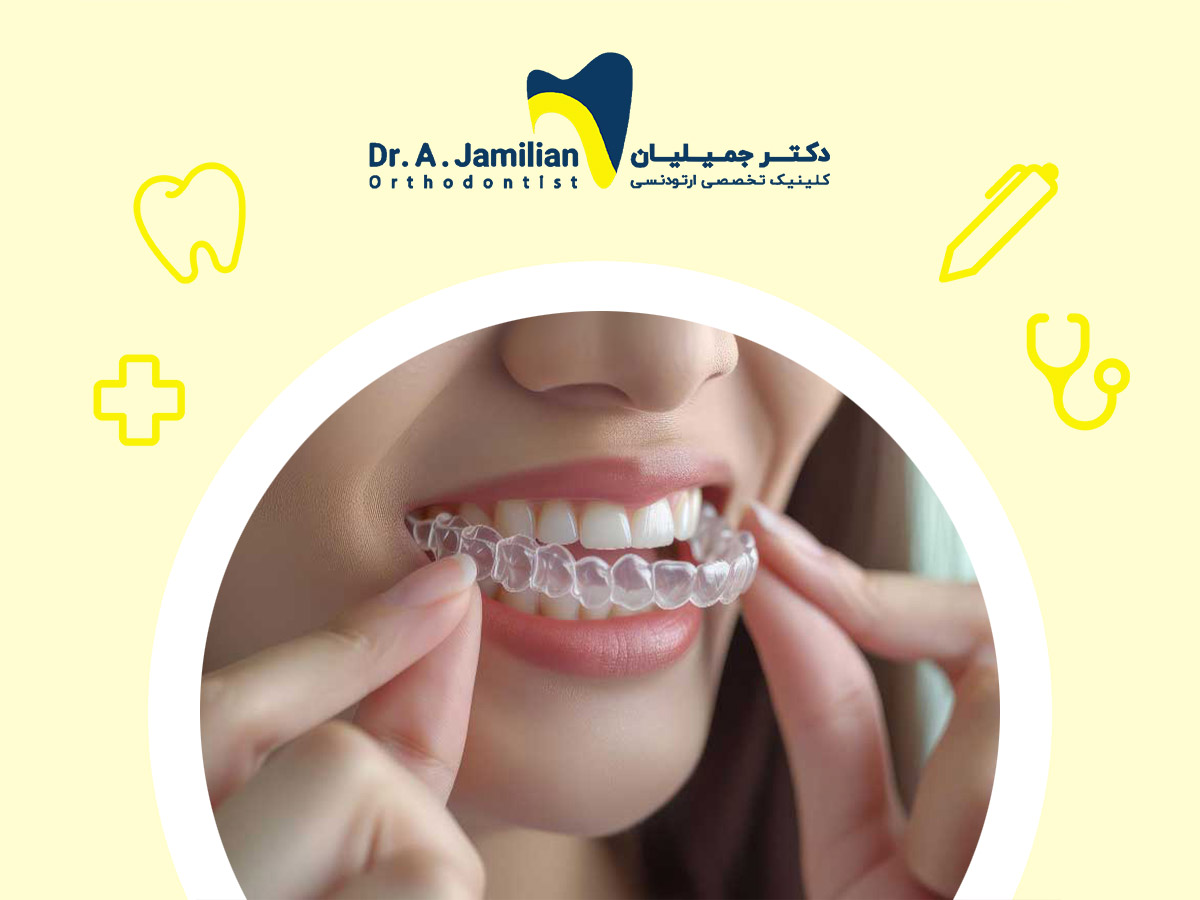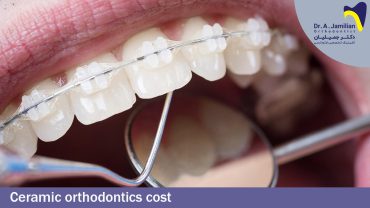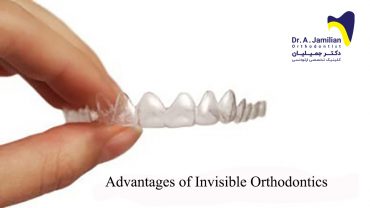In the invisible orthodontic method, orthodontic appliances are not visible or clear on the teeth. Depending on damage, purpose, and dozens of other reasons, the orthodontist determines which type of invisible orthodontics best suits the patient. Let’s dive deeper into the realm of invisible orthodontics. The Invisible orthodontics has three different methods ,which are referred to and shown below.
Orthodontists are now able to offer multiple options to help patients achieve straighter teeth by invisible orthodontics. Types of invisible braces include lingual orthodontic, clear aligners, and tooth-colored braces. The main difference between these types of orthodontics is their capability to be removed. This means that you can remove the clear aligners from your mouth. It will be in the removable orthodontic category, but you cannot remove or move the lingual orthodontics and tooth-colored braces by yourself. they will be in the fixed orthodontic category.
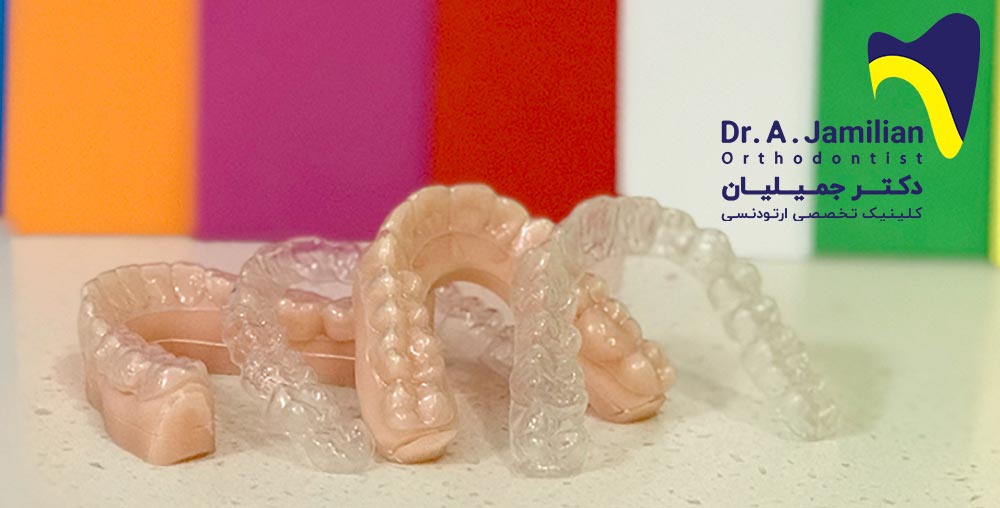
Lingual orthodontic
Lingual or inside braces are placed on the back of your teeth. Therefore, they are hidden from view. People know them as Incognito, or Harmony braces. Lingual braces need more effort and chair time, because lingual braces are attached to the back side of the teeth, they can damage your tongue or break very soon.
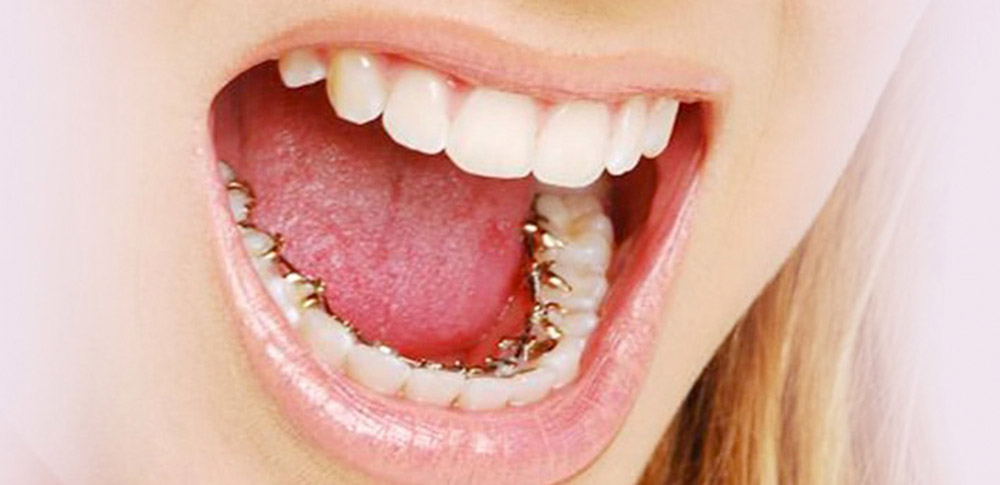
Clear aligners
In an invisible orthodontic method by clear aligners, we try to adjust teeth by devices that are a transparent, plastic form of dental braces. The type of malocclusion determines whether these invisible appliances can be used. An orthodontist indicates this procedure during a patient’s examination.
These clear aligners should be replaced every two weeks or every three weeks. Because of the invisibility of these aligners, there is an increasing popularity of clear aligner appliances.
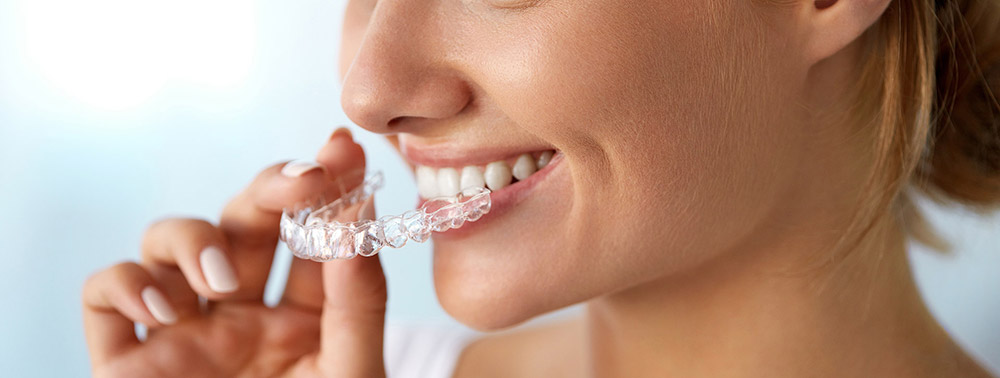
Tooth-colored braces
Tooth colored braces are made of clear plastic material or ceramic. They attach over your teeth to straighten and align them. They are efficient for all malocclusion types. They are colorless and cannot be seen. These braces are strong enough. They are beautiful and do not cause any problem for the patient.
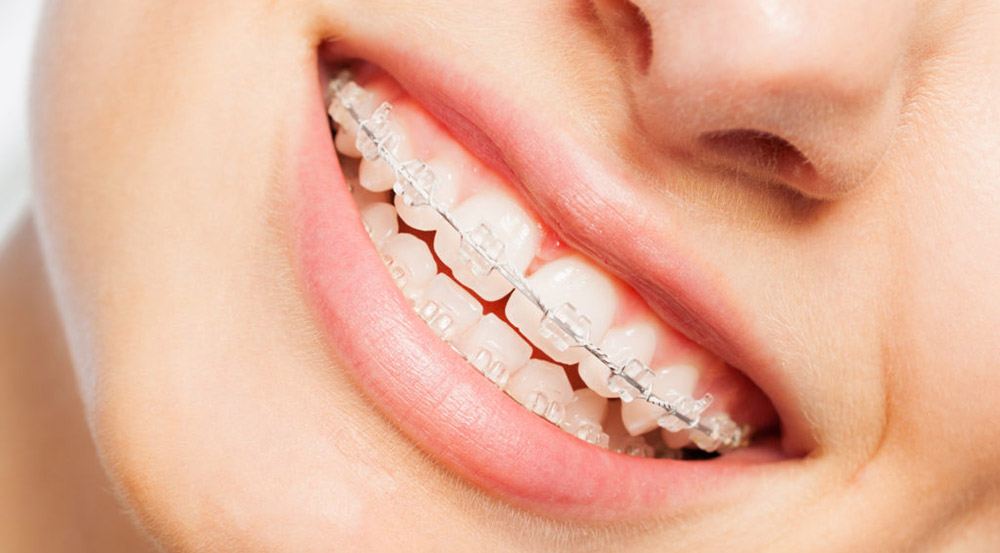
Invisible orthodontic
Clear Aligner Therapy is an orthodontic treatment modality, in which the patient wears a series of customized clear, removable aligners that gradually moves the teeth to a desired position.
Depending on severity of malocclusion, the total number of aligners varies. (The clear aligners designed by CAD/CAM technology). It is a computer-aided design, based on an orthodontic treatment plan.
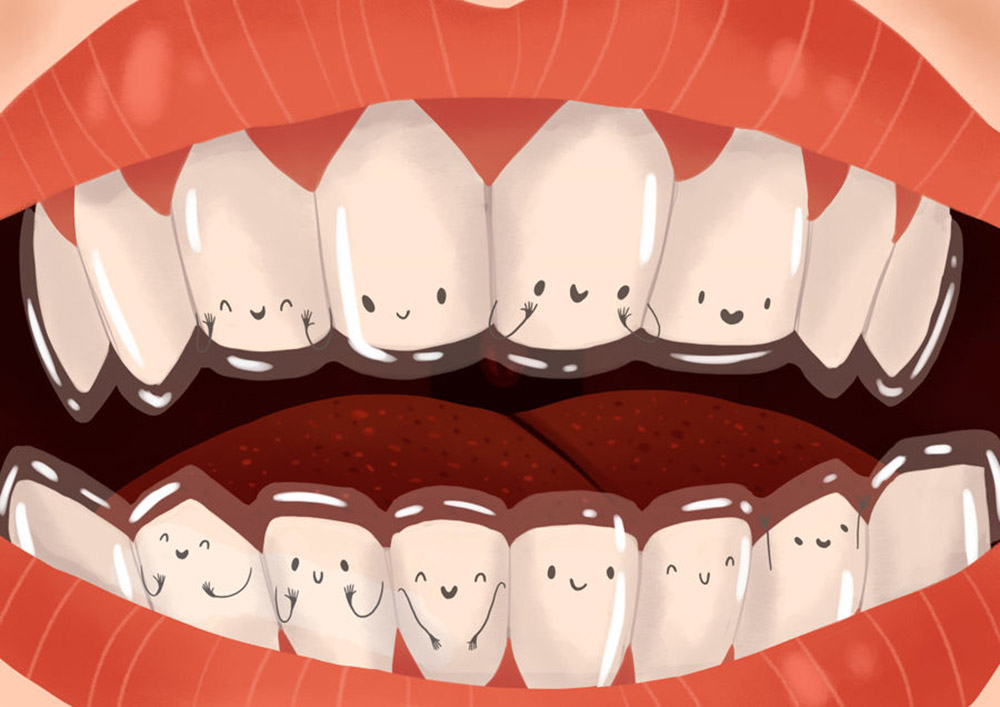
Clear aligner is an orthodontic technique that uses a series of computer generated custom plastic aligners. These invisible aligners slowly but surely position the teeth into proper alignment. Each patient will use a different amount of clear aligners during their full treatment. The patient uses one of the aligners for two weeks (22 hours a day). Each of the aligners provides a controlled and light force to the teeth and moves the teeth within two to three weeks. During this time, your teeth move about 0.25 millimeters.
Advantages of removable invisible aligners
While wearing the crystal-clear aligners, they are inconspicuous. Meaning, they are transparent and removable at any time, leading to an increased cosmetic value. Less chair time is an important advantage of removable invisible aligners. There are no abrasions or cuts while you are using invisible aligners like traditional braces .They are comfortable, because the aligner trays are fabricated with soft medical grade polymers. They can maintain good oral hygiene, because you could remove them while eating and brushing.
Aligners and invisible orthodontics and their application
Aligners are clear plates similar in appearance to the night guard. This removable frame made from medical plastic is almost invisible and moves teeth in a predetermined path by applying gradual force upon them. These plates are made by digital devices and using advanced software. In this procedure, no bands, brackets, and metal wires are used and you can carry out orthodontics treatment only by using a series of clear removable plates.
In this procedure, a treatment plan is designed by the computer software and 3D printing devices, and the unique plates are created for each patient.
- Each plate should be placed in the patient’s mouth for 3 weeks and 22 hours per day so that the directions determined in the treatment
- The plan could be applied to patients’ teeth. Plates should be taken out during eating, drinking (except for water), brushing, and flossing.
- In order to apply some force, attachments are required to be installed on your teeth which will be sent to you along with the manual.
- Taking dental impressions should be carried out after dentistry treatments such as filling, extracting, applying dental crown, or gum treatment.
- In treatment with clear alignments, the last plate is normally used as the retainer.
In order to schedule an orthodontics appointment and for more information about orthodontics cost please contact Jamilian DDS. , orthodontics.

Which type of invisible orthodontics are better?
As mentioned previously, depending on the variety of information, physical and environmental conditions, the orthodontist will recommend a type. Since fixed lingual orthodontics require great care, they are typically not recommended for young or careless patients. Lingual orthodontics are extremely prone to breaking and are relatively harder to clean compared to other types of fixed orthodontics. The use of invisible orthodontics with clear aligners also requires the patient to pay great effort in regular use of this type of orthodontics. Orthodontics with ceramic brackets of the tooth color is the best and most effective type of orthodontics. Although this type of orthodontics is not as strong and rigid as the conventional fixed orthodontics with metal brackets and wires, it is quite effective in speeding up the process of treatment compared to other types of invisible orthodontics.
Invisible Orthodontics FAQ
The invisible orthodontics is a good choice if you don’t want the people to notice the brackets on your teeth. Therefore, various types of fixed and removable invisible orthodontics could be used for a successful treatment.
Normally, invisible orthodontics costs more than the standard orthodontics procedures. For instance, tooth-colored porcelain orthodontics is more expensive than the fixed orthodontics with metal brackets. Clear and invisible aligners cost more than fixed and visible orthodontics, too. Especially if more aligners are used.
If the treatment plan is correct, after completion of the treatment the bones around the teeth will have a stable state. Thus, this treatment will be permanent and the patient will not have to wear aligners for the rest of their life.
While using invisible braces due to the fact that these braces are clear plastic and can be separated from the teeth, the patient is able to clean their teeth and accordingly they will have no dental plaques.
The important factor in this type is the invisibility of the brackets. Thus, it will have no negative effect on the patient’s face. As time passes, teeth will be straightened and aligned and the patient will look better. So positive changes will be seen in the patient’s face.
Simply put, Invisible orthodontics do not cause any pain. However, feeling a bit sore at the early days of treatment is natural. Moreover, slight pressure is applied to the teeth in order to move them. The standard amount of pressure is applied to the teeth, which does not cause tooth damage but, to the contrary, it helps improve its health.
You should wear aligners for 20 to 22 hours out of 24 per day. This means that you can only take out your aligners at the time of eating or drinking and you should put them back on your teeth immediately after eating.
These types of brackets are the best solution for straightening teeth without making them look abnormal. However, some of the malocclusions could not be treated with invisible orthodontics. The fixed orthodontics with porcelain brackets or fixed lingual orthodontics are another practical method for straightening various types of crowded teeth.
The orthodontics treatment duration depends on the type of malocclusion. Taking into account that these orthodontics appliances are used for correcting some specific types of malocclusion if worn regularly, straightening and correcting teeth may be completed within one year using braces. For correcting severe malocclusions, tooth-colored porcelain brackets are used and the course of treatment amounts to approximately two years. Once again, depending on the user’s cooperation & malocclusion if gone wrong it may take drastically more or lower.
